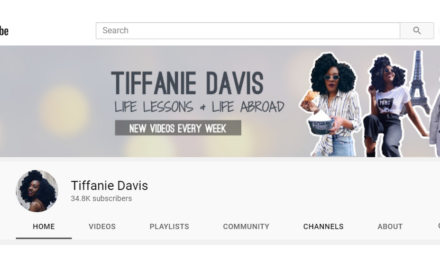Performance-driven content sets up content for success by creating a framework for improvement and effective planning. Investment in content is predicated on how well it performs vis-a-vis business objectives and the needs of a consumer. So setting up a consistent, repeatable model that spans the full content lifecycle provides ROI. Additional benefits include the following:
- Creates a consumer-centric content experience by leveraging data from metrics and user inputs to identify areas for content improvement
- Helps build a publication model around performance by tracking whether content achieves business and user objectives
- Enables personalization and omnichannel experiences, which require ongoing evaluation of the user
Performance-driven content is here to stay. You may know it by a different name-data-driven marketing. I prefer the term “performance-driven,” because a robust content strategy framework should derive itself from a performance-based model.
Such a model leverages a closed-loop strategy to repeatedly measure the efficacy of content solutions so owners can continuously improve an experience. Within the framework, a typical content lifecycle starts with planning for creation, assessing what exists and where it should go, defining the future state, designing the content solution, building it, and publishing it. Once content is published, you evaluate how well it performs, with metrics, measurements, and ongoing content audits. What you learn from these measurements informs how you will optimize the content. Of course, governance-which includes people, processes, standards, and tools-sits at the center.
An effective model requires that you look at several inputs on an ongoing basis. Remember that hard metrics will tell you what is happening to your content, but other inputs (such as user testing) will tell you why such things happen. Critical inputs to a performance model include user research and industry insights, personas/segmentation models, consumer journeys, competitive audits, content audits, quantitative metrics, and business requirements.
Another critical aspect of creating a performance model involves tying all the content you produce to a strategic framework. This framework should answer the following questions:
- Why did we create the content?
- What are its goals and objectives, and what user needs does it meet?
- Which channels does it appear on (e.g., desktop website or smartphone app)?
- How does the content come to exist?
- Who are the users?
- Where is the content surfacing?
With this framework in place, you can set up specific measurements to assess whether each of the areas is successful and optimized.
After understanding how your content is currently performing, conduct planning meetings for the future. Do you leave certain pieces alone? You should, if they perform well (as well as make additional investments in similar content)-but remember that over time, they may become less relevant. So they will still need to be evaluated periodically. Do you sunset or archive certain content? Maybe when the content does not meet its objectives. But before removing it altogether, consider whether it is not performing for other reasons. For example, perhaps it is not in the optimal format (e.g., a long PDF for a smartwatch) or in the right location on a website, buried where no one will see it. Consider if the content is valuable and worth finding the right format or placement for it.
A performance-driven model requires business processes and technologies to align, which means marketing and technology divisions should work together. Remember that a successful model also depends on specific expertise. Leverage analytics experts, content strategists, user researchers, user experience (UX) practitioners, and data specialists for the valuable insight they can provide. Finally, work toward the alignment of business units to track cross-channel user behavior and look at how content performs throughout the ecosystem, as well as within specific lines of business. Done well, a successful model can differentiate your company’s content, standing it up for long-term and continual success.






